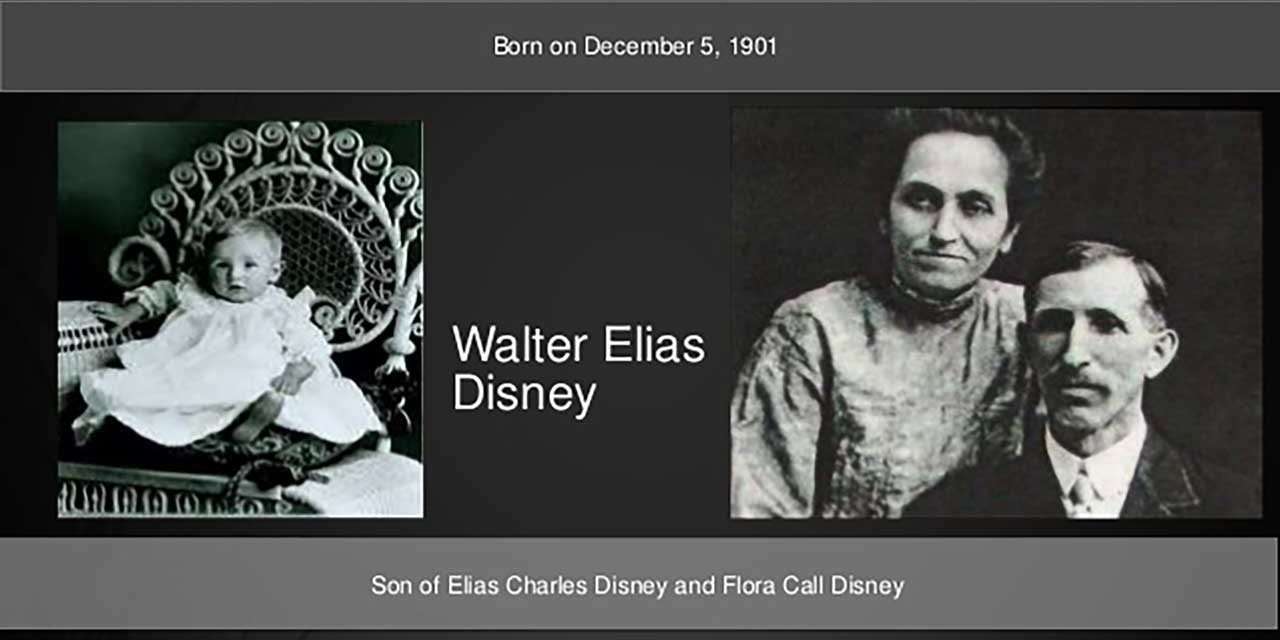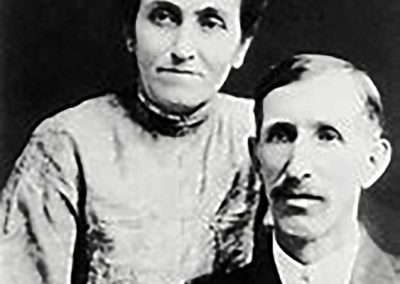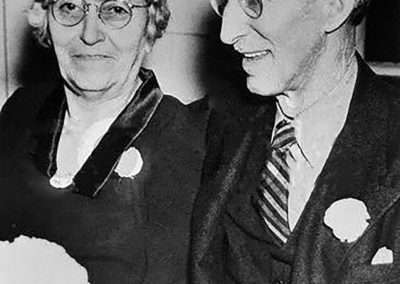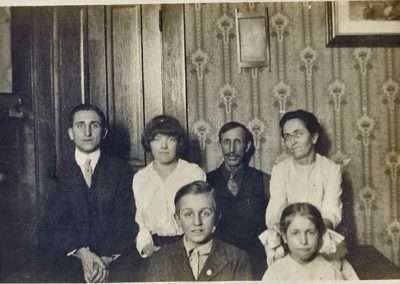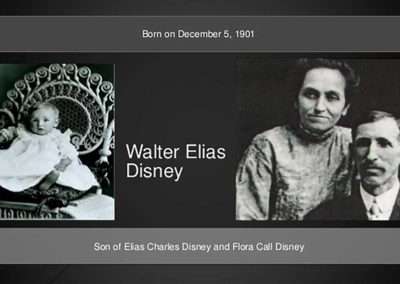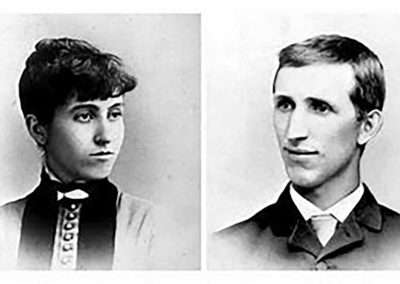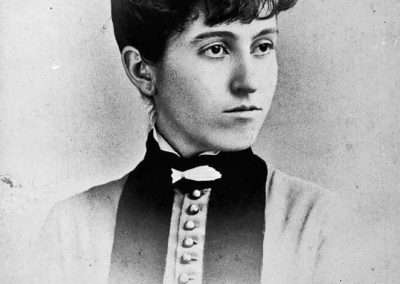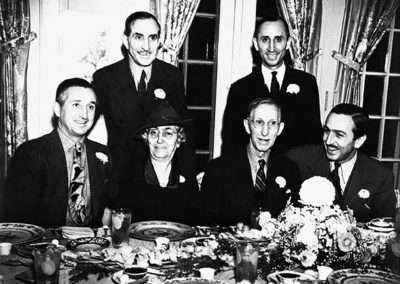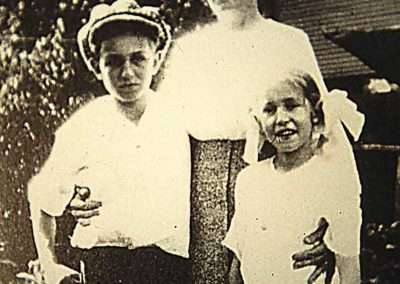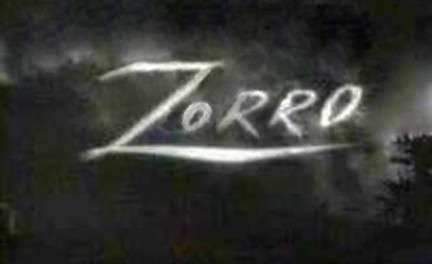Take a moment and think about this…Walt Disney has more books, magazines, articles, interviews (The countless people he interacted with throughout his career) and today with the internet, web pages devoted to him and his legacy, blogs and stories, more than most of the famous in history. Everyone whether they are a hard-core fan or just the curious, love to read about his company, theme parks, attractions and the people who over the years who helped Walt bring his dreams and ideas to fruition. But how many know the deep history of his family and where his ancestry lies?
Of course, his family history has been covered, but many fans seem to enjoy the now, the new attractions, shows, and lands. I am a history nerd, always have been, probably since first grade. So today I thought I would touch on a bit of Walt’s past family history, for it in itself is fascinating and as magical as Walt and his legacy.
Walt Disney’s family lineage was traced back to the family name of “d’Isignys of Normandy, a region in the northern part of France, just across the English Channel from England and coming from the town of Isigny-sur-Mer. This family came to England with William the Conqueror and actually fought in the Battle of Hastings. In the late 17th Century, the English Restoration began, and with it, several clans of the d’Isignys, Protestants all, settled in Ireland, in County Kilkenny. The family, which eventually changed its name to Disney, was restless and ambitious, always looking for a better opportunity (Much like the future Walt!). In a decade before the famous potato famine that forced thousands of Irish families to migrate to the United States, In July of 1834, Arundel Elias Disney, grandfather of Walt’s father Elias, along with his wife and two children boarded the ship, the New Jersey to America. In tow were his older brother Robert and his wife and their two children.
Although they had initially headed for America, Arundel did not stay there very long. As with most the lineage of the Disney family, restlessness reared its ugly head; he moved to the township of Goderich in southwestern Ontario Canada. This was a true wilderness, off of Lake Huron, and there he purchased 149 acres of land along the Maitland River. There, through hard work and determination, he farmed, built the first sawmill and gristmill in the region and fathered sixteen children…eight girls and eight boys.
In 1858, Arundel’ eldest son 25-year-old Kepple, (Walt’s grandfather) married an Irish immigrant woman, Mary Richardson. Kepple and his new bride moved to Bluevale in Morris Township, north of Goderich, where he purchased 100 acres of land and built a small cabin. It was on February 6th, 1859 that their first child, Elias Charles Disney (Walt’s father) was born. Kepple Disney, like past and future Disney’s had the wanderlust in them. He had many dreams and ideas and was never content to stay in one place, especially on a farm. At nearly 6 foot, he was a religious man, but also vain, growing long back whiskers, which he twirled and his hair was jet-black, always oiled and well- fashioned. With a high note of restlessness, he rented out his farm, left his family with his wife’s sister and went to Oil Springs to join a drilling crew. Gone for 2 years in which no oil was struck, returned home to Bluevale. He was soon off again to seek his fortune drilling salt wells. This failed, and he grudgingly returned to farming. But upon hearing of a gold strike in California, he was off again in 1877, this time with sons Robert and 18-year-old Elias.
Getting as far as Kansas, Kepple decided to scrap his Goldfield plans and obtained 300 acres of land from the Union Pacific Railroad. The Union Pacific was trying to tempt settlers to purchase land across its train route it was laying. The Disney’s had to purchase the land, they were not citizens of the United States and were not eligible for the Homestead Act. The area where they settled was just as remote and frontier-like as Bluevale. There were still native Indians in the area, and attacks still were occurring. In addition, crimes and bandits littered the area, the county seat was nicknamed the “Sodom of the Plains”. In addition to the aforementioned problems, the weather was horrific…Dry and bitter cold in the winter. It was so bad that the women scrounged for Buffalo bones to sell to make fertilizer and the men joined the railroad crews. Farming was cruel and hard, it both broke and hardened men. It was in this harsh climate that hardened Walt’s father Elias. And Elias was no more interested in farming then his father. He was an opportunist and wanted out.
It was the winter of 1885-1886 that was the turning point. Both Kepple and Elias had enough. They fought snow drifts 12 feet high, forcing settles to camp in the schoolhouse, and even trains could not get through. It was this time that Kepple and a neighboring family, the Calls decided to go on a scouting trip to Florida, where the Calls had relatives and the hope for better weather and a life. But the trip had another enticement for young Elias…The Calls sixteen-year-old daughter Flora. The Calls descendants came to America in 1636 in Boston. Eventually they settled in upstate New York. Elber Call, Flora’s Grandfather left in 1825, escaping hostile Indians and cold weather to Huron County in Ohio. His son Charles who graduated from Oberlin College, drifted around for several years, finally settling outside De Moines Iowa. He married a German immigrant Henrietta Gross and returned to Ohio. For reasons unknown, he left in 1879 to Ellis Kansas. It was nothing like Ohio, bitter cold and little to offer. So the parents of Walt’s future mother Flora, after that bitter winter left on a train for Florida with Elias and Kepple. Kepple was unhappy with Florida and returned to Ellis, but Elias settled in with the Calls in the middle of the state of Florida. It was described as a “Howling Wilderness”, but remembering their experiences in Kansas, the Calls thought it beautiful.
Elias, stayed in Florida because of his interest in Flora, purchased a 40-acre farm in Kismet, Florida. Kismet was founded in 1884, and was near Lake Dorr, about 8 miles west of Paisley, where Flora would become a teacher there. It even sported a 50 room hotel. What remains of Kismet is an abandoned cemetery with a few gravestones. Elias sold the farm and managed the Halifax Hotel in Daytona Beach, but soon left. He got a job delivering mail from a horse-drawn buckboard in Kissimmee, which by coincidence is east of the future Walt Disney World today! He now had enough money to buy an 80-acre orange grove by Paisley. After a short courtship with Flora, Elias Disney married Flora Call on January 1st, 1888 in Kismet, Lake County Florida, which is 50 miles north of the property that his future son Walt’s company would build Walt Disney World. The couple lived for a short time in the adjacent town of Acron Florida. Acron had its beginnings in the 1860’s on Acron Lake. It was home to a gristmill, sawmill citrus groves and farm families, initially had a population of 30, growing to around 300. The Acron School, started in 1875 with a Sara Campbell as its first teacher. Flora Call would become its second.
Unfortunately, the 1889 freeze, which caused the demise of a number of flourishing citrus towns, also ended Elias’s orange grove. He returned to delivering the mail. Charles Call, Flora’s father suffered an accident while clearing his land, never recovered and died in 1890. With the loss of her father, and Elias’ family wanderlust in his blood, he brought Flora and his newborn son Herbert to Chicago, where he worked as a construction worker. However, there was a man who would have a major influence in his life, his younger brother Robert. Totally different in success and physical statue, Robert was big, broad and tall, Elias was short, slim and very wiry. He was considered the “Dandy” of the family, and Elias always coveted his success, for he rarely had any. The fact that Robert looked like a man of means, he was a cleaver conniver and a talent for persuasion few could match, especially Elias. Six months after Elias’ wedding, Robert married a well-to-do Boston girl, and with her help, embarked on a speculation career in real estate, gold mines and oil. He came to Chicago for employment as a carpenter, a trade he learned while working on the railroad. His brother Robert was instrumental in his future move from Chicago to Marceline Missouri. He forever lived his life in his younger brother’s shadow.
Elias reached Chicago in early 1890 with Herbert and Flora, who was expecting their second child. They rented a small cottage at 3515 South Vernon, located on the cities’ south side. This was only twenty blocks from the proposed 1893 Columbian Exposition, celebrating Columbus’ 400 anniversary discovering America and he hoped to get employment there. Construction began on the fair in spring of 1891, and that December, Flora gave birth to Elias’ second son, Raymond. His tough and rough early life on the plains and farms, and the fact he only made a dollar a day as a carpenter at the fair site, Elias became industrious and very frugal, remaining so throughout his life. By the next year, he had saved enough money, $700.00 to securing a piece of land (This was through Robert’s real estate connections) at 1249 Tripp Ave. (Changed to 2156 North Tripp Ave. in 1906).
Here Elias constructed a two story wooden home, and the following June, another son was added to the growing family, Roy O. Disney. Elias contracted out to help build homes, even Flora would go out with him to the sites and work along with the men. He only averaged 7 dollars a week, but again, using Robert’s contacts, and obtaining secondary mortgages on his own house, he started buying plots of land, and with Flora’s help in designing the homes, built them in his neighborhood, which in 1890’s was still very undeveloped and primitive and selling them. These were small cottages for the working man. Under his brother’s wing, he became a real estate tycoon, though a very modest one.
Elias Disney was a very religious man, always walked the straight and narrow, believed in hard work, and in frivolity. He seldom laughed or joked, in fact the only time he let his hair down, so to speak, is when he played the fiddle. Flora and Elias life revolved around the Congregational Church, of which they were devoted members. When the congregation decided to build a new church, Elias was named trustee and member of the building committee. The new church that Elias help construct was dedicated in October of 1900. Elias was good friends with the Pastor of the church, Walter Parr. He even sometimes took to the pulpit to preach. As the story goes, Flora and the pastor’s wife were pregnant at the same time. Both parties agreed if they both had sons, Elias would name his after Walter, and the pastor his, after Elias. This was how Walt got his name. But the Parr’s baby boy was born the following July, was not named Elias, but Charles Alexander. It was not until they had another son, two and a half years later in May of 1904, naming the child Walter Elias Parr. The Disney’s had one last child, a girl Ruth and Walt’s only sister in 1902. From this point on, is when the countless writings about Walt and his family really start. We all know about the move to Marceline, Missouri and all the tales leading up to Mickey Mouse, Disneyland and his untimely passing. But I wanted to pass on a little of his family background, where he got that fierce spirit to never give up, to continue to believe when no one else would. The Disney family history is fascinating and shines a strong light onto the life of Walter Elias Disney, the man who gave us Disneyland!

